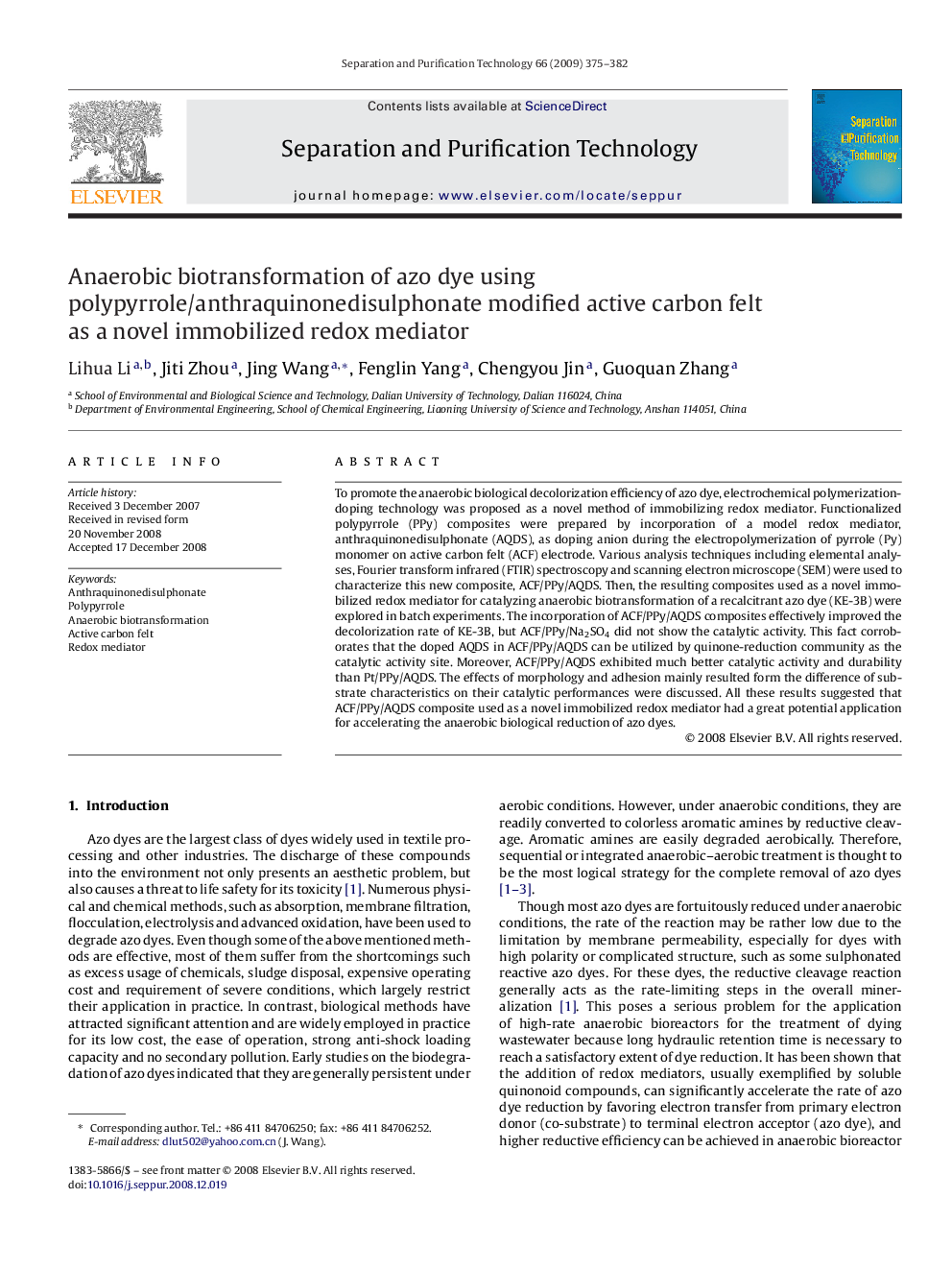| Article ID | Journal | Published Year | Pages | File Type |
|---|---|---|---|---|
| 643338 | Separation and Purification Technology | 2009 | 8 Pages |
Abstract
To promote the anaerobic biological decolorization efficiency of azo dye, electrochemical polymerization-doping technology was proposed as a novel method of immobilizing redox mediator. Functionalized polypyrrole (PPy) composites were prepared by incorporation of a model redox mediator, anthraquinonedisulphonate (AQDS), as doping anion during the electropolymerization of pyrrole (Py) monomer on active carbon felt (ACF) electrode. Various analysis techniques including elemental analyses, Fourier transform infrared (FTIR) spectroscopy and scanning electron microscope (SEM) were used to characterize this new composite, ACF/PPy/AQDS. Then, the resulting composites used as a novel immobilized redox mediator for catalyzing anaerobic biotransformation of a recalcitrant azo dye (KE-3B) were explored in batch experiments. The incorporation of ACF/PPy/AQDS composites effectively improved the decolorization rate of KE-3B, but ACF/PPy/Na2SO4 did not show the catalytic activity. This fact corroborates that the doped AQDS in ACF/PPy/AQDS can be utilized by quinone-reduction community as the catalytic activity site. Moreover, ACF/PPy/AQDS exhibited much better catalytic activity and durability than Pt/PPy/AQDS. The effects of morphology and adhesion mainly resulted form the difference of substrate characteristics on their catalytic performances were discussed. All these results suggested that ACF/PPy/AQDS composite used as a novel immobilized redox mediator had a great potential application for accelerating the anaerobic biological reduction of azo dyes.
Related Topics
Physical Sciences and Engineering
Chemical Engineering
Filtration and Separation
Authors
Lihua Li, Jiti Zhou, Jing Wang, Fenglin Yang, Chengyou Jin, Guoquan Zhang,
